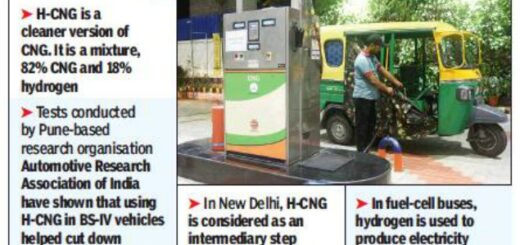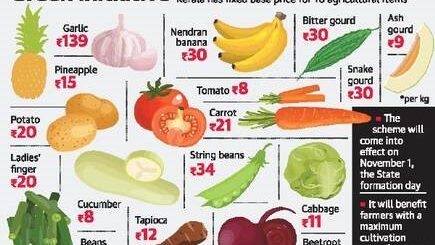National Current Affairs – UPSC/IAS Exams- 10th March 2020
Topic: Economy
In News: Reserve Bank of India announced that it was superseding the Yes Bank Board of Directors for a period of 30 days “owing to serious deterioration in the financial position of the Bank”.
More on the Topic:
- Between 2004, when it was launched, and 2015, Yes Bank was one of the buzziest banks.
- In 2015, The UBS report (a global financial services company) stated that Yes Bank had loaned more than its net worth to companies that were unlikely to pay back.
- However, Yes Bank continued to extend loans to several big firms and became the fifth-largest private sector lender.
- As much as 25% of all Yes Bank loans were extended to Non-Banking Financial Companies, real estate firms, and the construction sector. These were the three sectors of the Indian economy that have struggled the most over the past few years.
- Non-performing assets (NPAs) started rising in Yes Bank.
- Yes Bank’s NPAs were not as alarmingly high as some of the other banks in the country. But what made it more susceptible to bankruptcy was its inability to honestly recognise its NPAs. It under-reporting NPAs.
- Yes Bank fared poorly on provision coverage ratio, which essentially maps the ability of a bank to deal with NPAs.
| The provision coverage ratio (PCR) gives an indication of the provision made against bad loans from the profit generated. Higher the PCR, lower is the unexposed part of the bad debts. |
- While debtors failing to pay back was the central problem, what further compounded Yes Bank’s financial problems was the reaction of its depositors.
- As Yes Bank faltered on NPAs, its share price went down and public confidence in it fell. This reflected not only in depositors shying away from opening fresh accounts but also in massive withdrawals by existing depositors, who pulled out over Rs 18,000 crore between April and September last year.
- It is estimated that up to 20% more withdrawals could have happened between October and February. So essentially, Yes Bank lost out on capital (money) from both depositors and debtors.
Will Yes Bank’s fall affect other private sector banks?
- The banking system runs on trust. The Yes Bank episode could likely push depositors away from private sector banks.
- These developments may slowdown deposit growth for select private banks leading to lower credit growth.
What is RBI’s solution to Yes Bank’s revival; why has it triggered a controversy?
- On March 6, the RBI released its “draft” revival plan for Yes Bank. Accordingly, State Bank of India could pick up 49% stake, and hold on to at least 26% for the next three years.
- While this issue is still to be settled, The RBI stated that the so-called Additional Tier 1 (or AT1) capital that was raised by Yes Bank would be completely written off. In other words, those who lent money to Yes Bank under the AT1 category of bonds would lose all their money.
Way Forward:
- Depositors: RBI has come up with a draft reconstruction plan for Yes Bank which proposes that depositors’ funds would be protected.
- Employees: They would have the same service conditions, including remuneration, at least for one year.
- Key managerial personnel: the new board would be empowered to take a call.
- Restructuring: The SBI, which has received board approval to invest in Yes Bank, will have to pick up to 49% stake, according to the scheme, at a price that is not less than ₹10 for each share having a face value of ₹2.
- Conditions: The investor bank (SBI) also cannot reduce its holding below 26% before the completion of three years from the date of infusion of the capital.
| What is AT1 capital?
· In a bank, there are different tiers (hierarchies) of capital (money). The top tier or T1 has the “equity” capital, that is money put in by the owners and shareholders. · It is the riskiest category of capital. Then there are different types of bonds (such as AT1 and AT2), which a bank floats to raise money from the market. Last is the depositor the one who parks her money in the bank’s savings account. · The depositor’s money is the safest type of capital. When something goes wrong, the depositor is paid back first and the equity owner the last. When the going is good, the depositor earns the lowest reward (rate of return) while the equity owners earn the most profits. · What has created a problem is that RBI has said that capital raised via AT1 bonds, which is in the same tier of capital as equity (i.e., Tier 1), will be written off even though equity will not be. |
Source: Indian Express
SAWEN (South Asia Wildlife Enforcement Network)
Topic: Environment and Ecology
In News: SAWEN (South Asia Wildlife Enforcement Network) was involed in the recent study of Red pandas.
More on the Topic:
- Wildlife crime has emerged as one of the greatest threats to the survival of many wildlife species in South Asia as well as across the globe.
- Curbing the wildlife crime demands well coordinated multi-agency and multi-country efforts with high level of commitment and advancement.
- South Asia Wildlife Enforcement Network (SAWEN) provides a platform for its member countries to cooperatively work together in the fight against the burgeoning wildlife crime.
- (SAWEN) is an inter-governmental wildlife law enforcement support body of South Asian countries namely – Afghanistan, Bangladesh, Bhutan, India, Maldives, Nepal, Pakistan and Sri Lanka.
- SAWEN was officially launched in January, 2011 in Paro Bhutan. Secretariat: Kathmandu, Nepal
Source: Indian Express
Topic: Art and Culture
In News: Arifa Jaan from Jammu and Kashmir was honoured on women’s day in the #SheInspiresUs platform of GOI for her contribution in reviving Namda craft.
More on the topic:
- Namda is the craft of carpet weaving, a form of matting. They are made from wool by practice of felting the wool rather than weaving it. The Felted carpets are predominantly made of pure wool.
- Namda is usually a sandwich of many layers of wool flattened over each other. After a layer is spread, it is sprinkled homogenously with water and pressed with a tool known as ‘pinjra’(woven willow wicker)
- It is said to have originated in the 11th century when Akbar ordered for asuitable coverage for his horse who was affected by biting cold.
Source: PIB
Topic: Government Schemes
In News: Women ranging in the age group 27 to 57 years receive fellowship support ranging from Rs 25000 to 55000 for different categories under Knowledge Involvement in Research Advancement through Nurturing (KIRAN)’ Scheme for continuing higher education in Science and Technology after a break in career.
More on the Topic:
- The Department of Science and Technology (DST) is implementing ‘Knowledge Involvement in Research Advancement through Nurturing (KIRAN)’ Scheme to provide various career opportunities to women scientists and technologists.
- It is primarily aimed to bring gender parity in the Science & Technology sector by inducting more women talent in the research & development domain through various programmes.
- Women Scientists Scheme (WOS) of the Department under the KIRAN scheme, including other schemes, empowers women in science and technology.
- Many of the women who have completed the scheme have initiated into successful careers in science, technology, and in patents.
- The ‘Women Scientist Scheme’ provides career opportunities to unemployed women scientists and technologists, especially those who had break in career, for pursuing research in frontier areas of Science and Engineering.
Source: PIB
Topic: Reports and Indices
In News: The first Gender Social Norms Index was recently released by the UN Development Programmme (UNDP).
More on the Topic:
- Despite decades of progress closing the equality gap between men and women, close to 90 percent of men and women hold some sort of bias against women.
- Almost half of those polled feel that men are superior political leaders.
- More than 40 per cent believe they make better business executives and are more entitled to jobs when the economy is lagging.
- Moreover, 28 per cent think it is justified for a man to beat his wife.
- The analysis also highlighted a bias shift in some 30 countries, revealing that while some show improvements, attitudes in others appear to have worsened in recent years – signaling that progress cannot be taken for granted.
Reasons behind the Gaps:
- Despite tangible progress in closing gender inequalities in developmental areas, such as education and health as well as in removing legal barriers to political and economic participation, there exist power gaps.
- This is because while men and women vote at similar rates, only 24 percent of parliamentary seats worldwide are held by women and there are only 10 female heads of government out of 193 Member States.
- Furthermore, women are paid less than men working the same jobs and are much less likely to be in senior positions.
Way Ahead:
- Gender gaps are still all too obvious in other areas, particularly those that challenge power relations and are most influential in actually achieving true equality.
- Therefore, world leaders has to accelerate action to meet global targets on gender equality.
- Governments and institutions should utilize new policies to change these discriminatory beliefs and practices through education, and by raising awareness and changing incentives.
Source: Indian Express
Topic: Polity and Governance
In News: Parliamentary panel on education identified shortfalls in both budgetary funding and utilisation, resulting in critical infrastructure gaps.
More on the Topic:
- In its report on the 2020-2021 demand for grants for school education submitted to the Rajya Sabha last week, the Parliamentary Standing Committee on Human Resource Development (HRD) expressed concern that budgetary allocations saw a 27% cut from proposals made by the School Education department.
- The parliamentary panel also slammed the government for its nearly nil rate of progress in building classrooms, labs and libraries to strengthen government higher secondary schools.
- Overall, for the core Samagra Shiksha Scheme, the department had only spent 71% of revised estimates by December 31, 2019.
- The panel “expressed dismay” at the stark deficits in government school infrastructure, citing the latest survey data.
Unified District Information System for Education (UDISE) 2017-18 Survey Findings:
- Only 56% of schools have electricity, with the lowest rates in Manipur and Madhya Pradesh, where less than 20% have access to power.
- Less than 57% of schools have playgrounds, including less than 30% of schools in Odisha and Jammu and Kashmir.
- Almost 40% of schools did not have a boundary wall, endangering the safety of students and school property.
Panel Recommendations:
- The HRD Ministry should collaborate with the Mahatma Gandhi National Rural Employment Guarantee Scheme (MGNREGS) to construct boundary walls, and work with the Ministry of New and Renewable Energy to provide solar energy and other renewable energy sources so that schools have access to power.
- The department should look into the factors impeding the infrastructure development and resolve them at the earliest so as to ensure that the students get the best possible facilities.
- The Centre should replicate the model of States which have done well in creating and maintaining such facilities.
- Delay in completion of infrastructure not only leads to students getting alienated from the government schools but also leads to cost overruns and cause an additional strain on the financial resources of the country.
- Special care has to be taken in this regard.
Source: Hindu
Topic: Science and Technology
In News: As part of its initiative to prevent decline in the area under paddy cultivation, the University of Agricultural and Horticultural Sciences(UAHS), Shivamogga, has developed ‘Sahyadri Megha’, a new red variety of paddy that is resistant to blast disease and rich in nutrients.
More on the Topic:
- ‘Sahyadri Megha’ is developed under the hybridization breeding method by cross-breeding the best among the ‘Jyothi’ variety with that of ‘Akkalu’, a native disease-resistant and protein-rich paddy variety.
- Rice blast is one of the most destructive diseases of rice. A leaf blast infection can kill seedlings or plants up to the tillering stage. At later growth stages, a severe leaf blast infection reduces leaf area for grain fill, reducing grain yield.
- Pathogen: Fungus
Model Mains Question: Elucidate technological interventions to improve agriculture productivity.
Source:Hindu




















